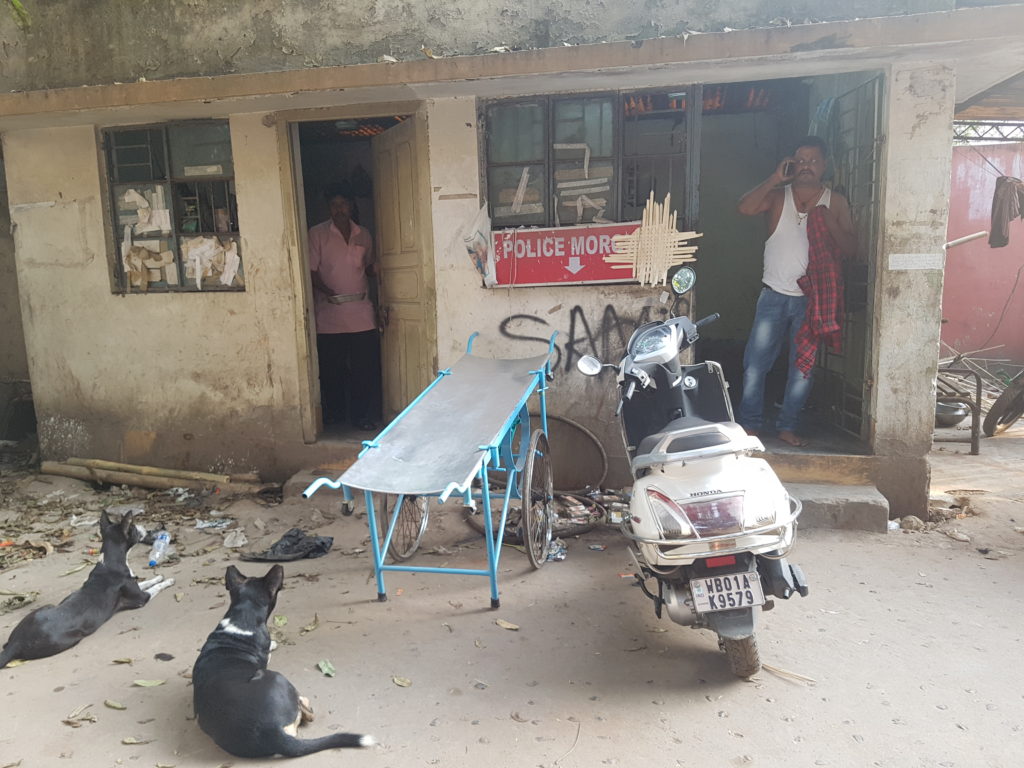The Mahars of Bombay Presidency, who buried the human and animal dead, were essential to the colonial state as frontline health workers. They worked in filthy burial grounds where jackals often dug up the dead
A guest post from Sohini Chattopadhyay, PhD candidate, History Department, Columbia University
In 1898, as the bubonic plague epidemic gripped India, buriers in Jaola (present-day Latur) refused to dig graves. They demanded higher wages as deaths soared uncontrollably at a time when it was unknown how the disease spread so rapidly. Given their acute risk of contracting the disease working in proximity to the bodies, the buriers said the existing salary of 12 rupees a month was not enough to ensure that families would survive. The buriers, mostly coming from the Mahar community in Bombay Presidency engaged in hereditary forms of stigmatised labour that included removing animal carcasses and the human dead.
The buriers pointed out the unsanitary conditions on the grounds. In many graveyards, the soil was shallow and jackals and dogs would uproot the dead, leading to the constant work of reburial and maintenance. In a few days, the local District Board conceded to their demands, and the salary was hiked to 15 rupees. Such stories of asserting rights in the face of excessive demand on essential work are hard to come by. Colonial archives rarely tell us about mortuary workers, as archives contain texts that underwrite caste and class prejudices.
The social stigmatisation of mortuary work explains the silence in the colonial archives. What archives choose to tell is equally revealing. Colonial archives contain snippets of payrolls for mortuary workers, enlisted by caste names such as Doms, Mahars, and linguistically fluid terms such as ‘murdafarashis’. Documents on civic administration, such as municipal reports, administrative reports, and health reports summarily acknowledge the number of mortuary workers on the respective department’s payrolls, but do not state or acknowledge clearly how much the city’s public health depended upon their work.
The lack of media coverage on mortuary workers, therefore, has historical precedence. The absence of accounts on the absolutely essential roles played by mortuary workers to maintain the public health of cities and villages can be traced back to colonial modes of bureaucratic writing, and social erasures born out of caste prejudices
But documents written at the time of epidemics make it clear that mortuary workers were essential allies of the state, as informants and public health workers performing tasks that people from other castes would shun. They closely worked with law and order. During the bubonic plague epidemic, despite the deaths of mortuary workers recorded in some health reports, their role remained largely unacknowledged. One can find a rare snippet in an 1898 Bombay Plague Committee Report, which attributed the control of the disease in Surat District to the efficient work of burial and cremation workers and guards who painstakingly noted the causes of death and informed of symptoms to the health officers.
Despite being a primary informant, mortuary workers’ social marginality was central to how the law could disproportionately affect them. Hence, a historian tracing the lives of mortuary worker finds a better trail in the police and judicial archives, showing us how mortuary workers also bore the brunt of policing and social distrust. These records are complicated to parse because they contain lives that never wished to be narrated in the way they have been recorded. Therefore, stories of mortuary workers emerge through their arrests, categorisation as members of “criminal tribes”, or indiscriminate stereotypes such as untrustworthy, prone to intoxication and violent behaviour.

In Poona, Pandoo Vittoo was charged for intentionally omitting to give information of a case of plague in his village. He was sentenced to a fine of fifteen rupees (a month’s salary) or fifteen days’ rigorous imprisonment. Colonial police records are rife with such tantalizing snippets without longer elaboration of the case. The historian is left wondering: did Pandoo Vittoo withhold information, or was it a simple error? Was he falsely accused? Did he receive any incentive to hide such deaths? Mortuary workers did not have lawyers to defend their position, and their relationship with the police has been fraught. Unlike lengthy debates that run for hundreds of pages regarding property disputes or high-profile murders, a conviction of a mortuary worker barely contains more than two or three sentences.
The lack of media coverage on mortuary workers, therefore, has historical precedence. The absence of accounts on the absolutely essential roles played by mortuary workers to maintain the public health of cities and villages can be traced back to colonial modes of bureaucratic writing, and social erasures born out of caste prejudices. As labour historian Chitra Joshi notes, “workers are in fact faced with a double death. Decimated by economic transition, they are at the same time being effaced from the pages of history” (Joshi, 2003: 3). It is time we undo this historic gap.
Sohini Chattopadhyay is working on a dissertation on everyday technologies and mortuary work at moments of mass death such as epidemics, riots and famines, and how they have created durable systems of death practices and accountability in cities. She can be reached c.sohini@columbia.edu